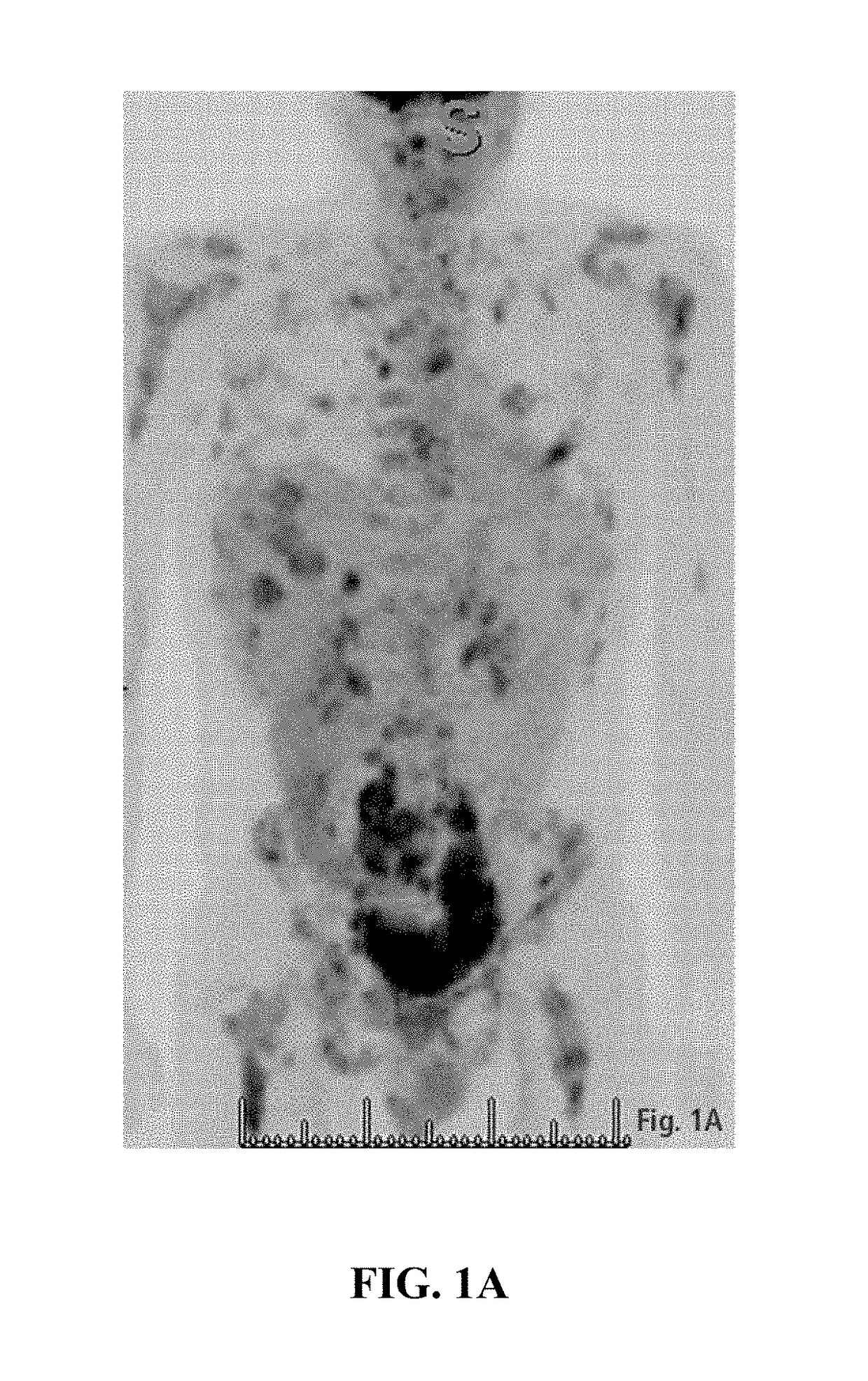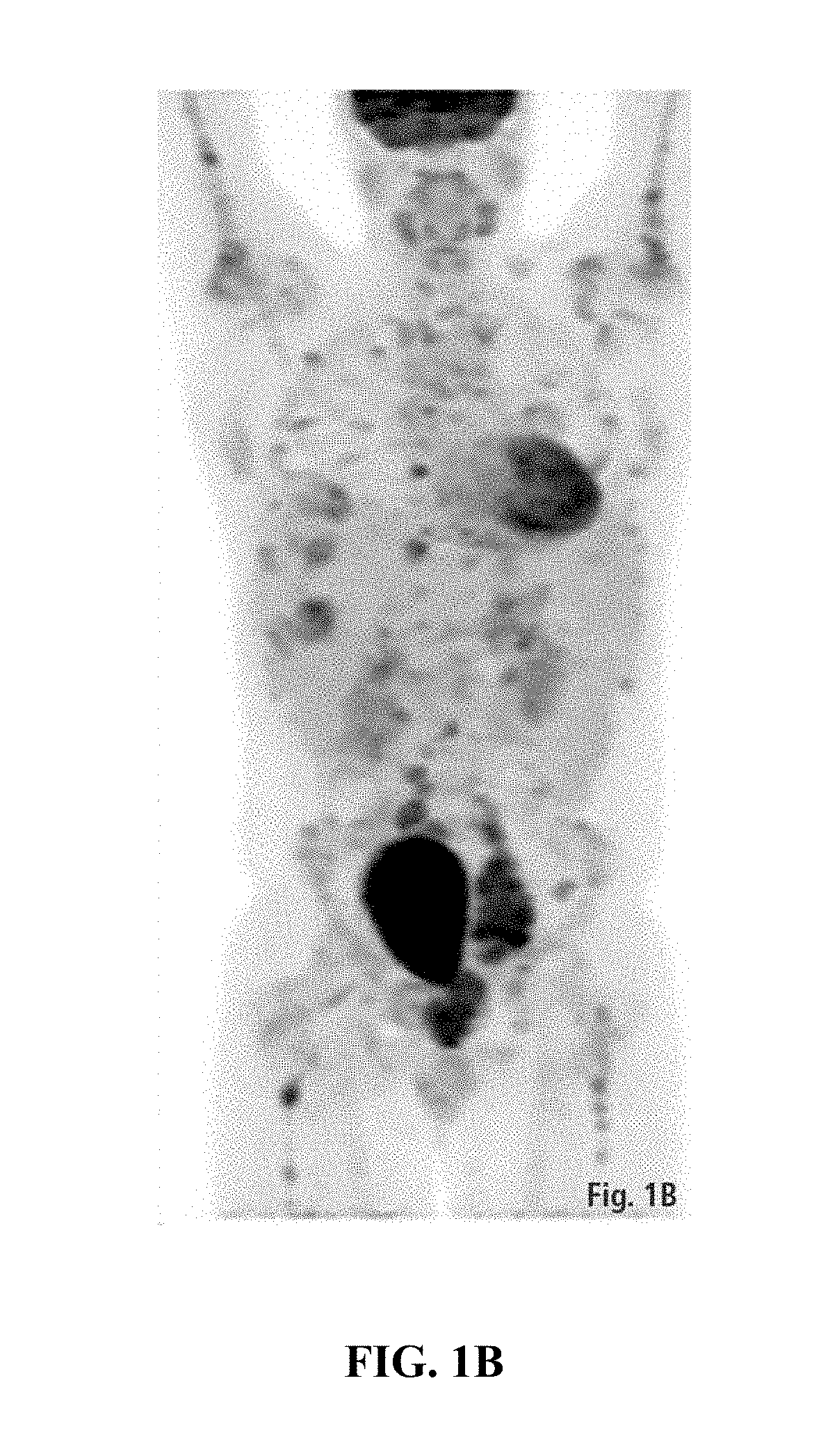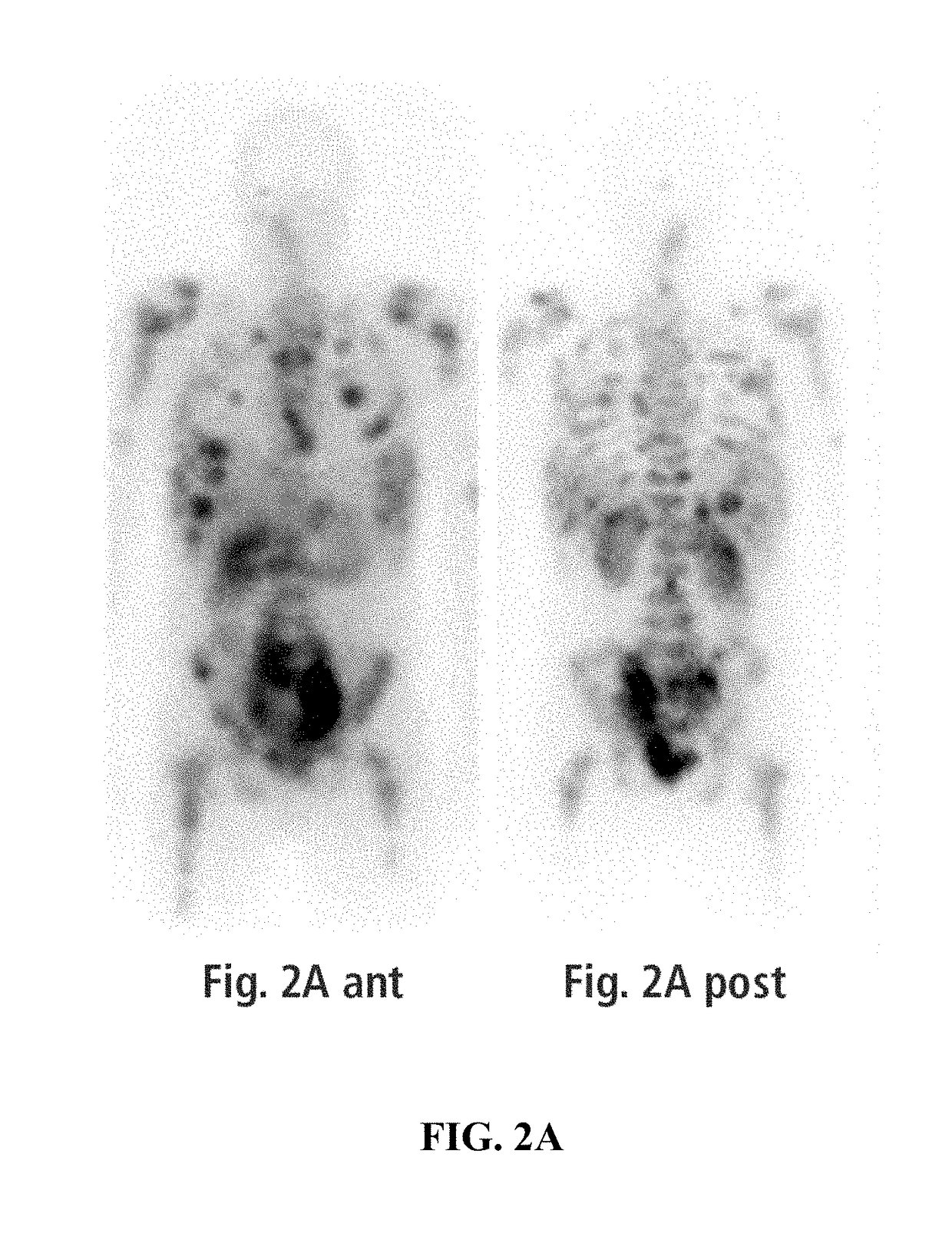Methods of treating a neuroendocrine tumor
a neuroendocrine tumor and tumor technology, applied in the field of methods of treating a neuroendocrine tumor, can solve the problems of poor prognosis of patients with metastatic neuroendocrine tumors (nets)
- Summary
- Abstract
- Description
- Claims
- Application Information
AI Technical Summary
Benefits of technology
Problems solved by technology
Method used
Image
Examples
example 1
of a NET with the Trk Inhibitor Entrectinib
[0069]A 28 year-old previously healthy male patient presented with progressive low back pain and 11 kg weight loss over the previous year. He was a never-smoker, occasional alcohol drinker, and an avid runner. The patient had no relevant family history of cancer. The patient's laboratory analysis revealed elevated levels of alkaline phosphatase (406 U / liter; normal range 38-126 U / liter), with serum chromogranin A (29 ng / ml; normal range <95 ng / ml), 24 hour urine 5-hydroxyindoleacetic acid (5-HIAA) (7 mg / day; normal range 0-15 mg / day), and serotonin (117 ng / ml; normal range 50-200 ng / ml) all found to be normal.
[0070]A right upper quadrant ultrasound noted echogenic masses present in the liver. A computed tomography (CT) scan identified low-density liver lesions, adrenal masses, bulky retroperitoneal and pelvic lymphadenopathy, and diffuse bony disease. Lumbar magnetic resonance imaging (MRI) revealed a diffusely abnormal marrow signal, with ...
example 2
ation of NTRK Fusion Genes in NETs Using an Illumina® Next-Generation Sequencing (NGS) Platform
[0074]Tumor biopsies are taken from a patient having, or suspected of having, a NET. Formalin-fixed paraffin embedded (FFPE) tumor samples are prepared and tested using immunohistochemistry to identify patients potentially having an NTRK gene fusion or translocation. Patients with tumor samples indicating elevated levels of NTRK protein expression are then further tested by next-generation sequencing for confirmation and more detailed analysis of the NTRK genes.
[0075]The Archer® FusionPlex® NTRK Panel is a targeted sequencing assay that detects and identifies NTRK1, NTRK2, and NTRK3 fusions without prior knowledge of fusion partners or breakpoints. FusionPlex® panels utilize Anchored Multiplex PCR (AMP™) to generate target-enriched libraries for NGS. Designed for low nucleic acid input, AMP utilizes unidirectional gene-specific primers (GSPs) that enrich for both known and unknown mutation...
PUM
| Property | Measurement | Unit |
|---|---|---|
| weight loss | aaaaa | aaaaa |
| weight | aaaaa | aaaaa |
| weight | aaaaa | aaaaa |
Abstract
Description
Claims
Application Information
 Login to View More
Login to View More - R&D
- Intellectual Property
- Life Sciences
- Materials
- Tech Scout
- Unparalleled Data Quality
- Higher Quality Content
- 60% Fewer Hallucinations
Browse by: Latest US Patents, China's latest patents, Technical Efficacy Thesaurus, Application Domain, Technology Topic, Popular Technical Reports.
© 2025 PatSnap. All rights reserved.Legal|Privacy policy|Modern Slavery Act Transparency Statement|Sitemap|About US| Contact US: help@patsnap.com



